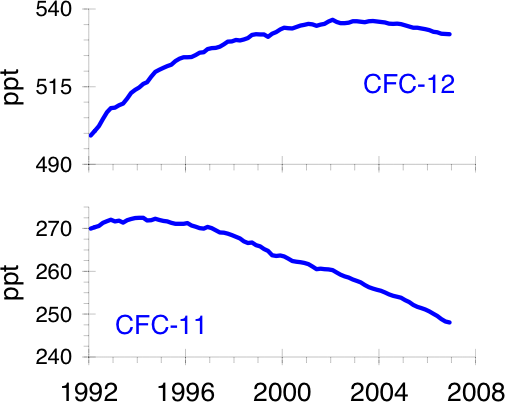[cs_content][cs_section parallax=”false” separator_top_type=”none” separator_top_height=”50px” separator_top_angle_point=”50″ separator_bottom_type=”none” separator_bottom_height=”50px” separator_bottom_angle_point=”50″ style=”margin: 0px;padding: 45px 0px;”][cs_row inner_container=”true” marginless_columns=”false” style=”margin: 0px auto;padding: 0px;”][cs_column fade=”false” fade_animation=”in” fade_animation_offset=”45px” fade_duration=”750″ type=”1/1″ style=”padding: 0px;”][cs_text]Monitoring and Management > 4. The Atmosphere >
Discuss the problems associated with the use of CFCs and assess the effectiveness of steps taken to alleviate these problems[/cs_text][/cs_column][/cs_row][/cs_section][cs_section parallax=”false” separator_top_type=”none” separator_top_height=”50px” separator_top_angle_point=”50″ separator_bottom_type=”none” separator_bottom_height=”50px” separator_bottom_angle_point=”50″ style=”margin: 0px;padding: 45px 0px;”][cs_row inner_container=”true” marginless_columns=”false” style=”margin: 0px auto;padding: 0px;”][cs_column fade=”false” fade_animation=”in” fade_animation_offset=”45px” fade_duration=”750″ type=”1/1″ style=”padding: 0px;”][cs_text]
- Once in the stratosphere, CFCs cause the destruction of ozone, with one CFC molecule being able to destroy thousands of ozone molecules. (See two below)
- This causes a decrease in stratospheric ozone concentration, particularly at the poles, and this decrease was first detected in the 1970s and 1980s.
- Ozone holes: Marked decreases in the concentration of ozone in the ozone layer above the north and south poles.
- Because the cycle of ozone formation and decomposition absorbs medium and high energy ultraviolet radiation, a decrease in ozone concentration causes more of this radiation to reach the surface of the earth.
- Medium to high energy ultraviolet radiation can cause:
- Sunburn.
- Skin cancers.
- Eye cataracts.
- Decreased immune response.
- Plant damage.
- Polymer decomposition.
- The only way to stop ozone destruction by CFCs is to prevent the releasing of the substances.
- There have been several international agreements aimed at stopping the use of CFCs and other ozone-destroying compounds.
- The Vienna Convention of 1985 established the framework for the protection of the ozone layer.
- The Montreal Protocol (The Montreal Protocol on Substances which Deplete the Ozone Layer) was signed in 1987 by 27 nations, and involved:
- Freezing CFC production at 1986 levels immediately.
- Reducing CFC production by 50% by the year 2000.
-
- A further agreement made in London in 1990 involved:
- Eliminating the production and use of CFCs, halons, and carbon tetrachloride by 2000, with this date being extended by ten years for developing nations.
- Eliminating the production and use of 1,1,1-trichloroethane (methyl chloroform) by 2005.
- Eliminating the production and use of HCFCs by 2040 at the latest, but preferably by 2020.
- A further agreement made in Copenhagen in 1992 involved:
- Eliminating the production and use of halons by the end of 1994.
- Eliminating the production and use of CFCs and 1,1,1-trichloroethane (methyl chloroform) by 1996.
- Providing financial aid to developing nations for the implementation of the above measures.
- A further agreement made in London in 1990 involved:
- More developed signatory nations to the above agreements, such as Australia, have been quite successful in adhering to terms and timetables.
- Recent research shows that these international agreements have been successful in solving the problem of ozone depletion.
[/cs_text][/cs_column][/cs_row][/cs_section][cs_section parallax=”false” separator_top_type=”none” separator_top_height=”50px” separator_top_angle_point=”50″ separator_bottom_type=”none” separator_bottom_height=”50px” separator_bottom_angle_point=”50″ style=”margin: 0px;padding: 45px 0px;”][cs_row inner_container=”true” marginless_columns=”false” style=”margin: 0px auto;padding: 0px;”][cs_column fade=”false” fade_animation=”in” fade_animation_offset=”45px” fade_duration=”750″ type=”1/1″ style=”padding: 0px;”][x_video_embed no_container=”false” type=”16:9″][/x_video_embed][/cs_column][/cs_row][/cs_section][/cs_content]

